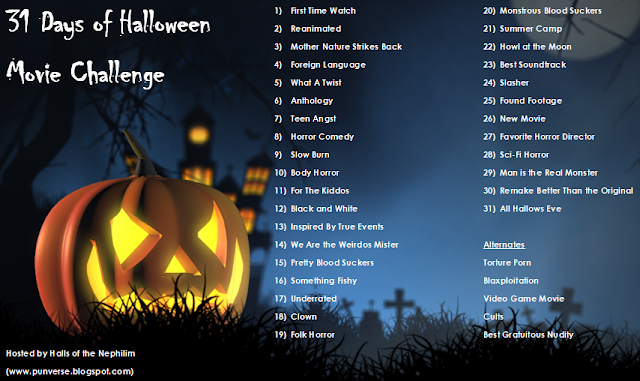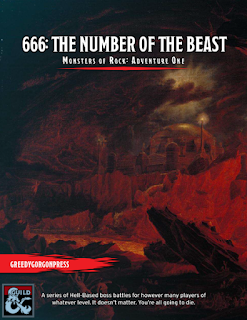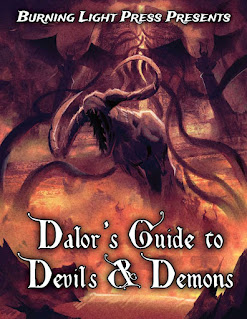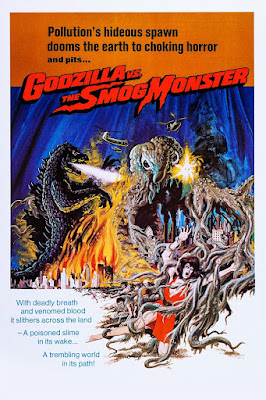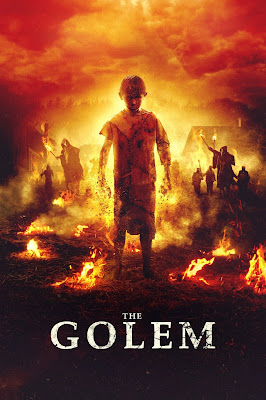A More Than Human Starter
 The Blade Runner – The Roleplaying Game Starter Set takes
roleplayers into a world of despair and uncertainty, when what it is to be
Human is lost, when empathy is all that separates mankind from that which is
not only faster and stronger than it us, but also threatens to replace us.
Under the darkness of a world soiled by war, pollution, and ecological
degradation, in the shadows spun by neon, simulacra skulk, hiding amongst those
they want to be like, and they will do anything to survive and become more like
the masters they once served. The year is 2037. The Wallace Corporation is the
wealthiest company in the system and using advances made on Tyrell Corporation
technology and patents, has introduced the Nexus-9, a replicant design
incapable of lying or harming humans of its own accord. The United Nations
classifies the Nexus-9 as ‘safe’ Replicants and grants them the status of second-class
citizens with limited rights. Rep-Detect Units of the world’s various police
forces are still responsible for investigating crimes related to replicants and
some even begin to employ Nexus-9 units as investigators. The Blade Runner –
The Roleplaying Game Starter Set presents a complete investigation—or Case
File—as it is known for four players and the Game Runner. This includes a
summarised version of the full rules from the Blade Runner – The RoleplayingGame,
four pre-generated Investigators, two sets of dice, and the complete Case File
supported by innumerable handouts.
The Blade Runner – The Roleplaying Game Starter Set takes
roleplayers into a world of despair and uncertainty, when what it is to be
Human is lost, when empathy is all that separates mankind from that which is
not only faster and stronger than it us, but also threatens to replace us.
Under the darkness of a world soiled by war, pollution, and ecological
degradation, in the shadows spun by neon, simulacra skulk, hiding amongst those
they want to be like, and they will do anything to survive and become more like
the masters they once served. The year is 2037. The Wallace Corporation is the
wealthiest company in the system and using advances made on Tyrell Corporation
technology and patents, has introduced the Nexus-9, a replicant design
incapable of lying or harming humans of its own accord. The United Nations
classifies the Nexus-9 as ‘safe’ Replicants and grants them the status of second-class
citizens with limited rights. Rep-Detect Units of the world’s various police
forces are still responsible for investigating crimes related to replicants and
some even begin to employ Nexus-9 units as investigators. The Blade Runner –
The Roleplaying Game Starter Set presents a complete investigation—or Case
File—as it is known for four players and the Game Runner. This includes a
summarised version of the full rules from the Blade Runner – The RoleplayingGame,
four pre-generated Investigators, two sets of dice, and the complete Case File
supported by innumerable handouts.The Blade Runner – The Roleplaying Game Starter Set is published by Free League Publishing and comes very well appointed. It includes the thirty-two-page Rules book, the fifty-six-page Case File 01: Electric Dreams, four pre-generated Investigator sheets, a Time Tracker Sheet, a large foldout full-colour map of 2037 Los Angeles, twenty-six full colour-handouts—both clues and maps, seventy cards, and a set of eight dice. The dice consist of two six-sided, two eight-sided, two ten-sided, and two twelve-sided dice. The dice are marked with numbers and symbols. Successes are also marked with eye symbols, two for the maximum number on each die, whilst ones are marked with an Origami Unicorn. The cards include Initiative cards as well Mugshot cards for the Case File, plus Aerial Chase Obstacle cards, Ground Chase Obstacle cards, Foot Chase Obstacle cards, and Chase Manoeuvre cards for use in the different types of chases the Investigators have to engage in. The four pre-generated Investigators consist of two Humans and two Replicants. The Humans consist of a veteran Inspector and an Enforcer with a military background, whilst the Replicants consist of a Forensics Specialist and an Interrogation and Negotiation Specialist.
The Rules book wastes very little is getting on with the explaining the mechanics of the roleplaying game. There is a little colour fiction and a timeline of events from the eighties through the events of Blade Runner and its fallout, the Blackout which destroyed the digital world, its partial restoration via the Wallace Datalink Network, and the introduction of the Nexus-9 by the Wallace Corporation. It then explains some of the concepts of game play. This includes playing in shifts—four six-hour shifts per day—with one of them devoted to Downtime, when an Investigator can rest, relax, clear his head and reset his system. The players are advised to split the party and conduct multiple, separate investigative paths. An Investigator can suffer Stress—by Pushing skill rolls and rolling Origami Unicorn symbols on the die, working too many Shifts without Downtime, and from stressful situations. An Investigator who suffers too much Stress can be Broken, and in the case of a Replicant, result in his needing to return to the Rep-Detect Unit Headquarters for a Baseline Test, which will reset his stress levels, but will lose him Humanity Points if he has gained any. The Rules book also notes the roleplaying game’s capacity for Player Character versus Player Character conflict, typically triggered by different interpretations of a case or the moral choices stemming from such interpretations.
An Investigator in Blade Runner – The Roleplaying Game is simply detailed. He has four Attributes— Strength, Agility, Intelligence, and Empathy, and thirteen Skills, three per Attribute. The thirteenth Skill is Driving, which is derived from the manoeuvrability of the vehicle being driven. Both Attributes and Skills are assigned a letter, A, B, C, or D. Each letter corresponds to a die type. Thus, A to a twelve-sided die, B to a ten-sided die, C to an eight-sided die, and D to a six-sided die. To undertake an action, a player rolls one die for the Attribute and one die for the Skill. Rolls of six or more count as a success. Rolls of ten or more grant two successes. In general, unless rolls are opposed, only one success is required to succeed at an action. An extra success enables an Investigator to get more information, perform a task faster, or help an Investigator with a task. Only in combat do more than the one extra success count, indicating that more damage has been inflicted or a critical injury.
An easy task gives an Investigator an Advantage. In which case, his player rolls another die, equal to the lowest die in the pool. Conversely, a difficult task removes the lower die in the pool altogether. If any roll is unsuccessful, a player can choose to Push the dice roll and roll again. However, if a one—or the Origami Unicorn—is rolled on the first roll or the Pushed roll, the Investigator will suffer Stress. A Human can Push a Skill rolls once, but a Replicant can Push a Skill roll twice.
In addition, an Investigator can have Specialities associated with Skills—Humans tend to have them more Replicants. Both Human and Replicant will however, have a Key Memory and a Key Relationship. The Key Memory can be used once per game session to improve an Investigator’s chance to succeed and will earn him a Humanity Point at the end of the session, as will interacting with his Key Relationship. Throughout an investigation, an Investigator can earn and lose Promotion Points, depending upon his actions and progress in the case. Replicants who lose all of their Promotion Points must take a Baseline Test. Promotion Points can be spent to learn Specialities, to request specialised equipment, and to even apply for a pay increase. Humanity Points are earned for committing acts of compassion or humanity and can be used to increase Skills.
Mechanically, the Blade Runner – The Roleplaying Game Starter Set—and thus the Blade Runner – The Roleplaying Game—at this stage does not quite resemble the Year Zero used in Free League Publishing, such as Alien: The Roleplaying Game or Tales from the Loop – Roleplaying in the ’80s That Never Was. It is more like the rules to be found in Twilight 2000: Roleplaying in theWorld War III That Never Was, but ultimately, the major difference lies in the fact that in most Year Zero roleplaying games, a player will be rolling a handful of six-sided dice, whereas here, polyhedral dice and used, and typically just the two per roll. Combat is designed to be straightforward, an Investigator typically having one move and one action per round, initiative being handled by cards, with options including grappling, taking aim, manipulating or influencing someone, and so on. A roll of two or more Successes on an attack roll counts as a critical success, necessitating a roll on a Critical Injuries table with the ‘Crit Die’ for the weapon used. Blade Runner – The Roleplaying Game is not a forgiving game in terms of combat and all firearms have a high ‘Crit Die’, so the Investigators should not engage in combat lightly. The rules also cover vehicles in combat—some vehicles can be armed, but for the most part, one vehicle will be ramming another. The rules for chases cover chases on foot, and then by ground or in the air.
Further background details Los Angeles Police Department Precinct 995 or ‘the Tower’, which is where the Investigators are based as part of the Rep-Detect Unit. It lists some of the resources available to an Investigator via ‘the Tower’ and looks at leveraging assets, conducting investigations, and protecting your sources. It also discusses working the system in order to progress with a Case File, noting that making the wrong choices or not updating an Investigator’s Reporting Officer will result in a loss of Promotion Points, but may reward Humanity Points. The equipment covered in ‘Tools of the Trade’ includes the Voight-Kampff Machine, the Post-Traumatic Baseline Test used on Nexus-9 Investigators, various weapons including the PK-D 5223 Blaster and the PK-D FKM890 Blaster, and the LAPD Spinner – Detective Special Model 294-02.
The investigation included in the Blade Runner – The Roleplaying Game Starter Set is Case File 01: Electric Dreams. It is actually the first part of a campaign arc called ‘The Immortal Game’, which Free League Publishing intends to support with further releases. Case File 01: Electric Dreams opens with a classic scene almost exactly like that of Deckard’s introduction in Blade Runner. It is a nice touch, but it also introduces one of the many handouts in the scenario—a newspaper. The investigation involves a missing Replicant, working for the Rep-Detect Unit. The Investigators are assigned to find it. The investigation is supported with an array of high-quality handouts for the players and their Investigators, a countdown of events for the Game Runner to trigger, Downtime events to make the Investigator lives more interesting, and descriptions of the clues, locations, and NPCs for the Game Runner. There is advice on running the Case File with one, two, or three Investigators and on substituting Investigators of the players’ own creation using the rules in Blade Runner – The Roleplaying Game. It is a fairly complex scenario, which will probably take a group several sessions to roleplay through as the Investigators are divided physically in following multiple trails of clues—they can keep in touch via the KIA or ‘Knowledge Integration Assistant that each of them is assigned—and potentially morally as more and more of the mystery is revealed and the Investigators have to choose between what is the correct course of action in terms of procedure and what the best course of action in terms of empathy. Of course, they will be under pressure from both their boss—Deputy Chief Dave Holden—and the Wallace Corporation for a quick resolution, the Game Runner recording the Investigators’ actions and time spent on the Time Tracker. Fans of Blade Runner will definitely enjoy it as it visits several familiar locations and NPCs.
Physically, the Blade Runner – The Roleplaying Game Starter Set is very well produced. The two booklets could be a little sturdier and as with Alien: The Roleplaying Game, not everyone is going to appreciate its open layout and text boxes on dark backgrounds. The handouts and the maps and the cards though, are all of really high quality. The artwork is excellent, really capturing Bladerunner’s look, feel, and tone.
If there is a downside to the Blade Runner – The Roleplaying Game Starter Set, it is this. At the time of its publication and right now, it contains the only Case File available for the roleplaying game. However, once there are more Case Files, the Rules book becomes an easy reference for the basic rules that the players can consult, many of the cards can be used in play, and there are locations in Case File 01: Electric Dreams which the Investigators may revisit in future cases. Of course, the extra dice are useful too.
The Blade Runner – The Roleplaying Game Starter Set will appeal most obviously to the Blade Runner fan, as well as the Science Fiction fan, the neo-noir fan, and the fan of mysteries of any kind. This is a great introduction to Blade Runner – The Roleplaying Game, one which the Game Runner will definitely want as it provides the roleplaying game with its first full Case File, a superbly supported, well written mystery that captures the world of Blade Runner seen on onscreen.








.jpg)
